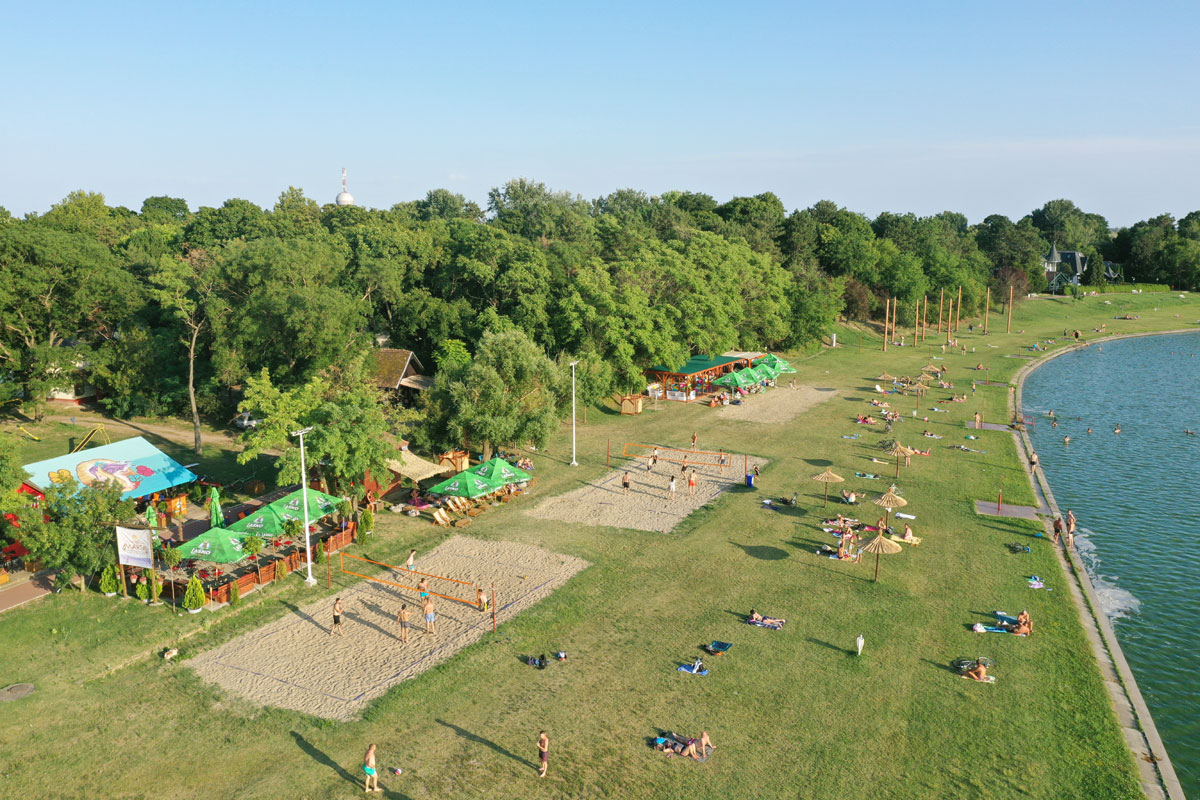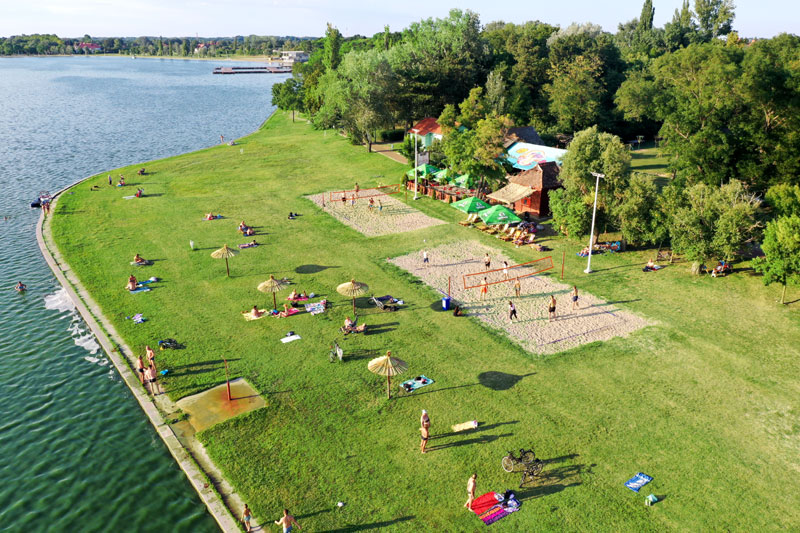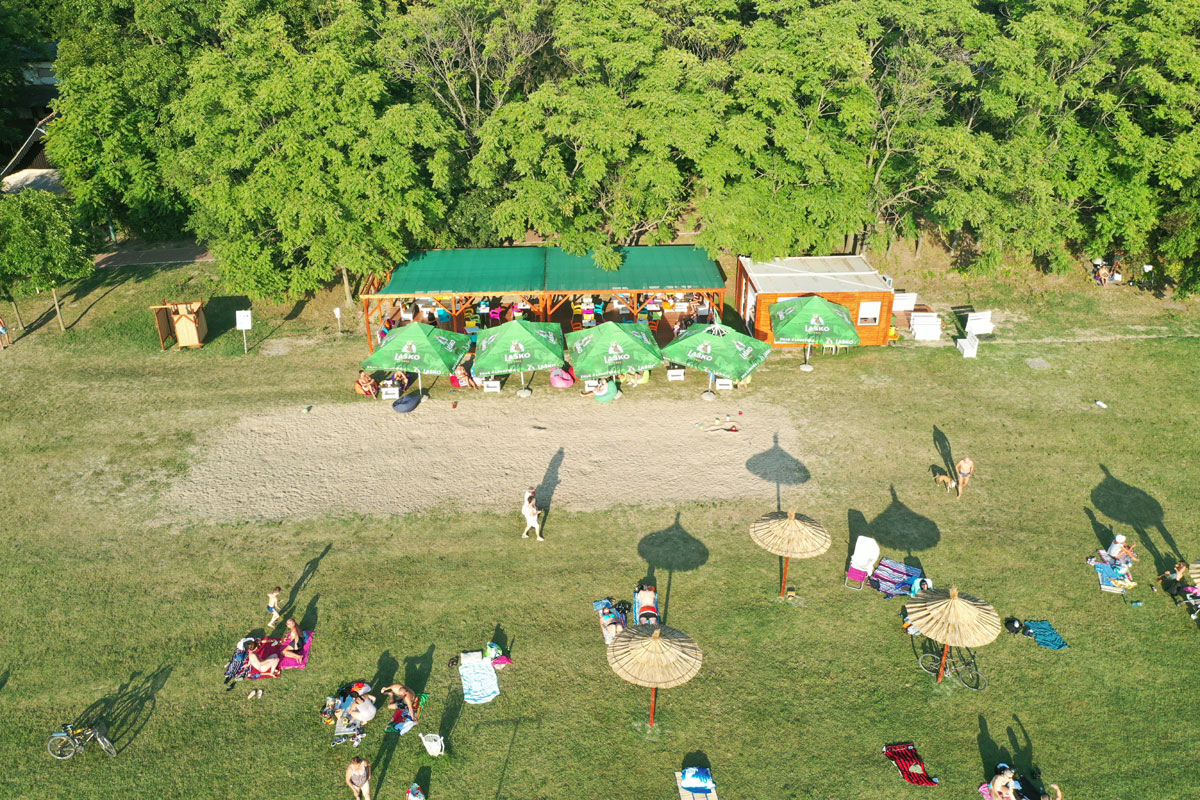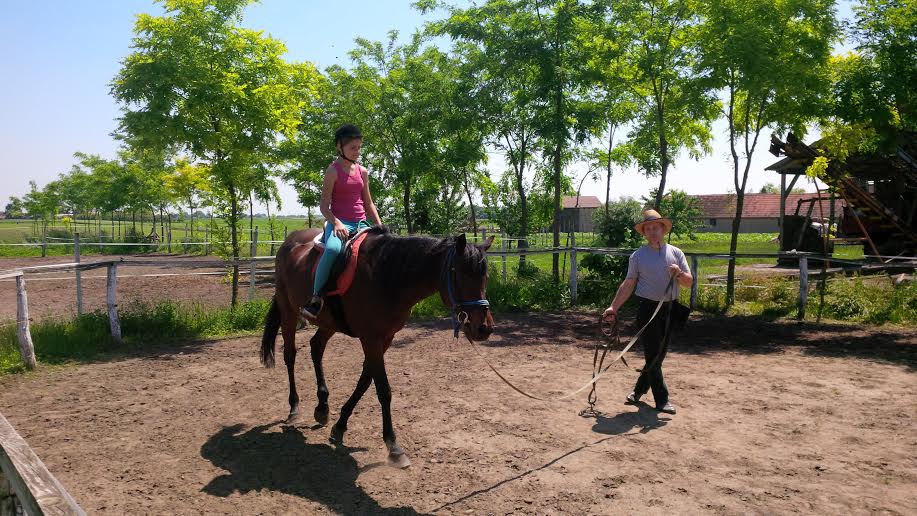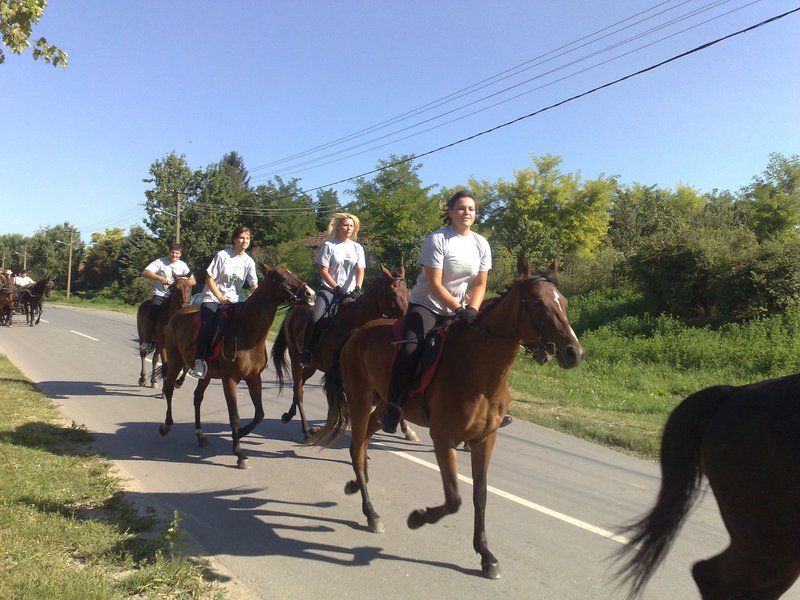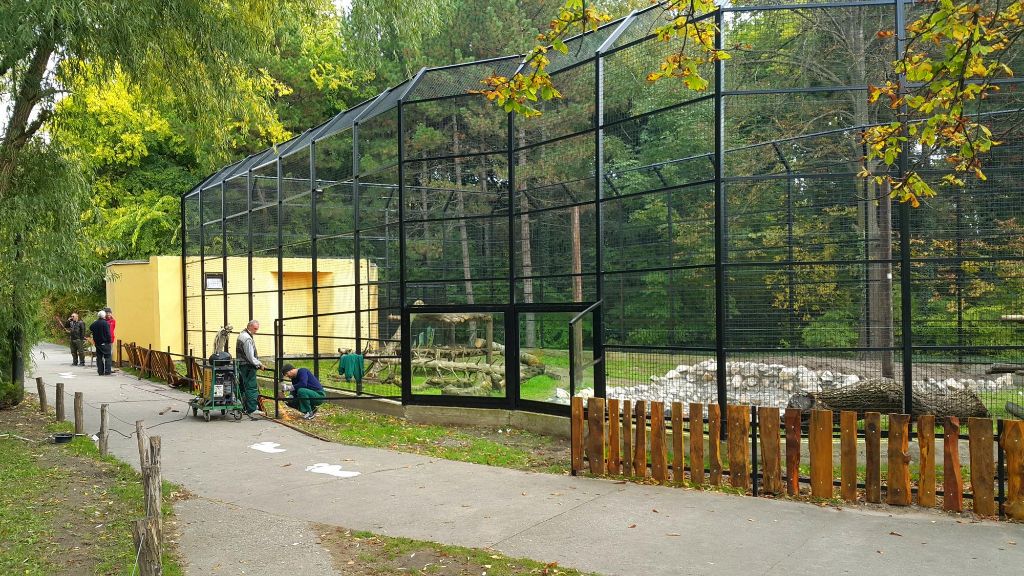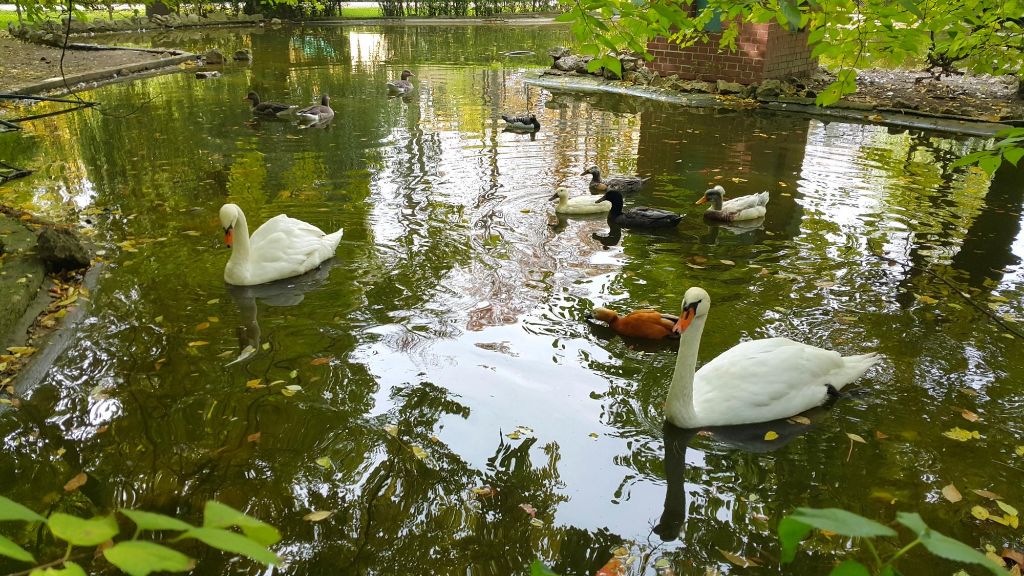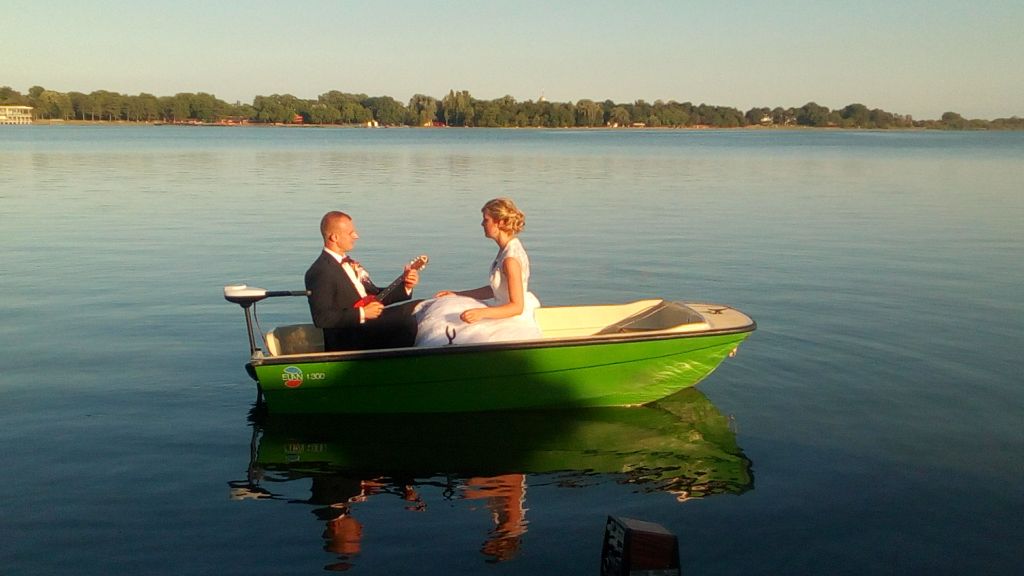As many people know, the first Olympic Games were held in ancient Greece, in the glory of the supreme god Zeus in 776 B.C. The Games were organized as a competition between the Greek cities – a sort of battle for prestige. They were held every four years and the period between the Games was called „The Olympics” and was used as a unit for time calculation. The importance of the Olympic Games is supported by the fact that at the time of the competition all conflicts were suspended.
Pierre de Coubertin founded the International Olympic Committee in 1894, which led to the opening of the first modern games from the 6th to the 15th of April, 1896. The first Olympic Games of the modern era were held in the city of Athens, where it all began.
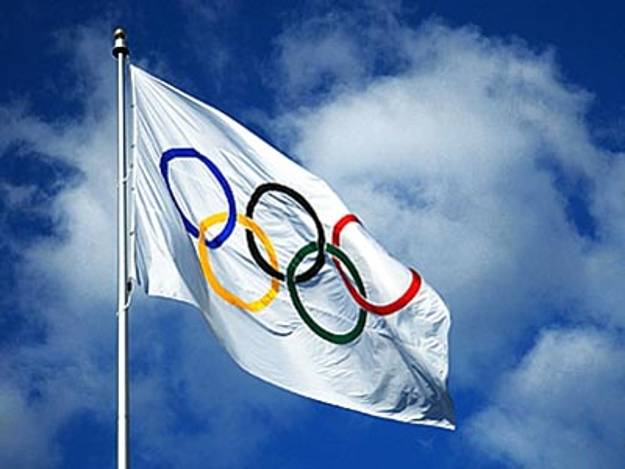
Photo: flag of the modern Olympic games
However, not many people know that the forefunner to the modern Olympic Games was the Palic Olympics (1880-1914), where hundreds of the best athletes competed each year. It was founded by Baron Lajos Vermes, and opened on the 26th of August, 1880.
Vermes himself is remembered as an talented athlete in many sports disciplines – swimming, athletics, gymnastics, wrestling, fencing and cycling.
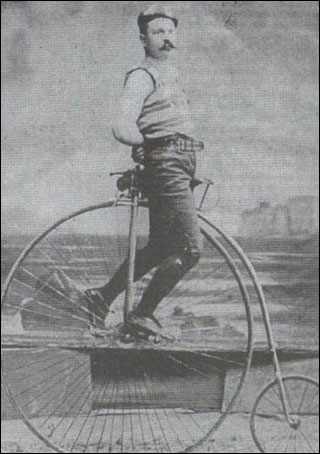
Photo: Lajos Vermes on a bicycle
Although a wealthy landlord, Vermes was not interested in managing or spreading his estates. He came up with the idea of founding the Games in 1876, while visiting Naples, where he intended to take measures from the Discobolus of Myron statue (the discus thrower), to create the same kind of sports prop and to resurrect this ancient sports discipline. During the first competition, athletes competed in wrestling, long jump and shot put, and did not compete in the discus throw discipline.
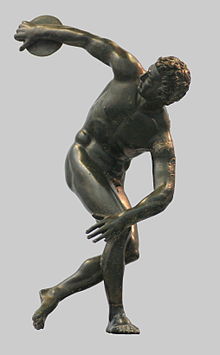
Photo: The Discobolus of Myron, circa 460-450 B.C.
The second competition was held on the 17th of July, 1881, with a significantly enriched program, in seven disciplines (a 7 km racewalking, boxing, fencing, sprinting, shot put, gymnastics and swimming). Vermes introduced fencing as a new discipline for practical reasons – in the 1980’s, practicing a sport was the privilege of a narrow circle of wealthy people and aristocracy.
Later on, the number of disciplines increased with gymnastics, swimming, athletics, boxing, wrestling, fencing and cycling, that were added to the program. Athletes competed in bowling, jumping without running start, racewalking, sailing, skating, and there were some unusual disciplines such as swimming with obstacles and sailng on ice, pole vaulting into water, shot put up in the air… The racewalking discipline became an Olympic sport in 1904 (St. Louis USA Summer Olympics).
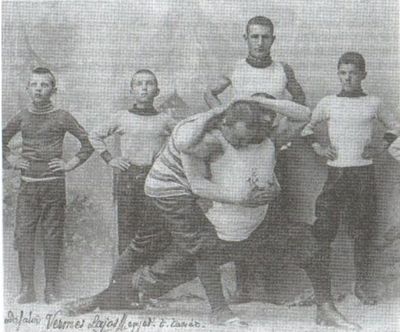
Photo: Wrestling competitors, Palic Olympic games
In order to provide a place for the Games to be held, Vermes is setting up gymnasiums and building athletic tracks in his orchard in Palic, and also building the first cycling track in this part of Europe (1884).
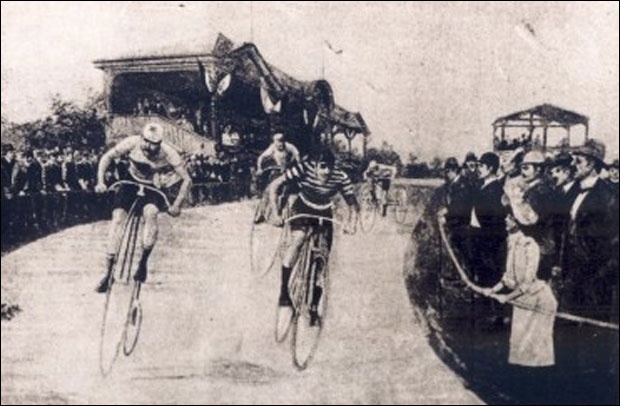
Photo: the first track in this part of Europe built by Vermes
Vermes also built an Olympic village for competitors, on the shore of Palic lake. Many more sports grounds were built, props and a grass terrain were also procured, and was available to all citizens to be used for picnics, ball games etc.
The Olympic Games were followed by a wealthy audience, while the competitors were people with less income (with few exceptions).
At that time, Palic was already a reputable spa and resort for wealthy, European nobility and the rich, and with the launch of the Palic Olympic games, Palic became a new sports center of Central Europe. The Olympic games were important to such an extent that the audience wore formal gowns while coming to the event. Extra trains were organized from Szeged for people to come to the Games, and the audience was greeted with music and gun salutes from cannons. Palic Olympics hosted athletes from Central European countries, but soon it became known throughout Europe. Athletes from the Kingdom of Serbia made their first appearance in 1884.
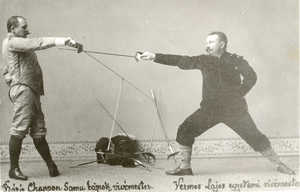
Photo: Fencing as one of the disciplines of Palic Olympic games
Palic Olympics was restored in the year 2000, in order to mark the 120th anniversary of its founding, and in 2004 a monument to Lajos Vermes was posted near Palic lakeshore. The promenade along the shore was named after him and the most prestigious sports award – Lajos Vermes Medal was established for the most significant sporting achievements.
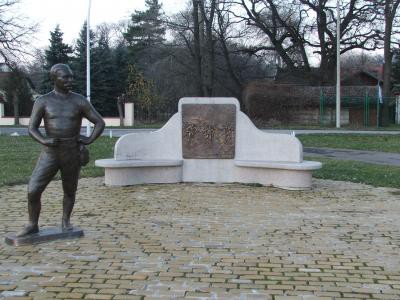
Photo: Lajos Vermes monument, Palic lakeshore

